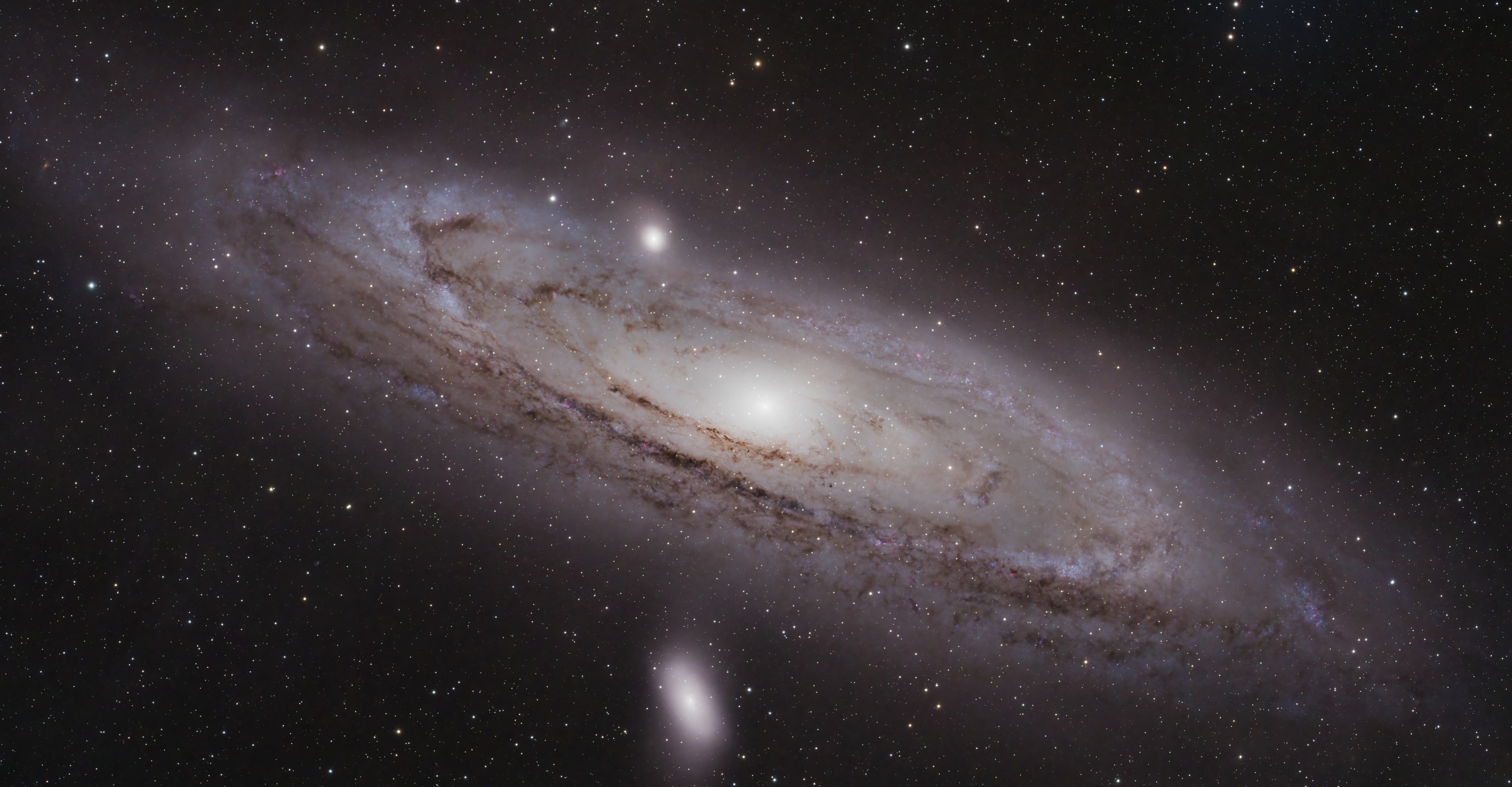Andromeda Galaxy (M31) - LRGB+Ha
Our nearest major galactic neighbor captured with LRGB and hydrogen-alpha enhancement

Click to explore in full resolution
Technical Specifications
Resolution: 6000x4000
Integration: LRGB: 20×180s each channel, Ha: 60×300s
Captured: August 26th (LRGB) + Ha data from backyard session
Equipment: Redcat71 refractor (350mm) with ZWO ASI2600MM Pro camera on Advanced VX mount
Location: Topaz Lake, Nevada campsite (Bortle 2) + backyard (Ha)
Processing Workflow
Scientific Context
The Andromeda Galaxy (Messier 31) is the nearest major galaxy to our own Milky Way, located approximately 2.537 million light-years from Earth. This magnificent spiral galaxy contains roughly one trillion stars and spans about 220,000 light-years across, making it the largest galaxy in our Local Group.
This image combines traditional LRGB (Luminance, Red, Green, Blue) broadband imaging with hydrogen-alpha narrowband data to reveal both the galaxy's stellar populations and its active star-forming regions. The LRGB data captures the overall structure and color of the galaxy, while the Ha enhancement highlights the emission nebulae within Andromeda's spiral arms where new stars are being born.
What makes this image particularly striking is the level of detail captured in the galaxy's spiral arms and dust lanes. The bright central bulge contains primarily older, redder stars, while the spiral arms show active star formation regions appearing as blue knots and reddish emission nebulae. The companion galaxies M32 and M110 are also visible in this field, showcasing the complex gravitational interactions within our Local Group.
The combination of pristine dark skies at Topaz Lake (Bortle 2) and the addition of hydrogen-alpha data reveals the intricate network of star-forming regions throughout Andromeda's disk, providing a preview of what our own galaxy might look like from a similar distance.